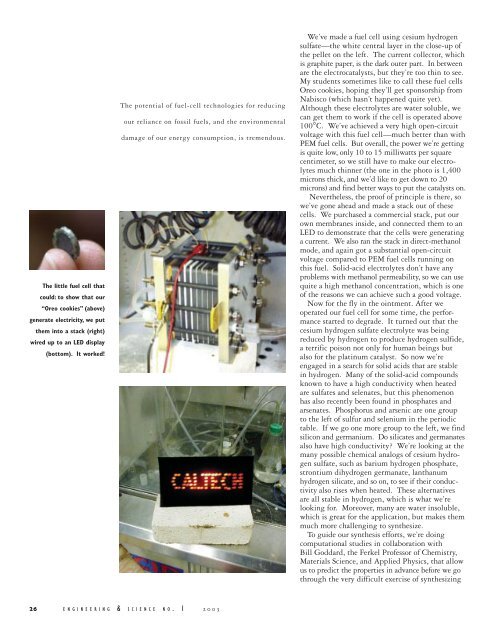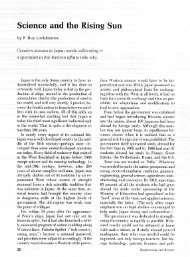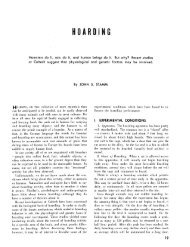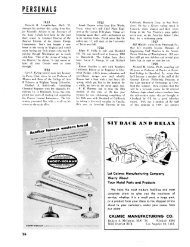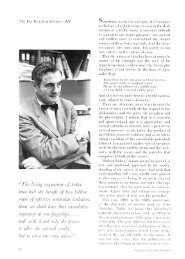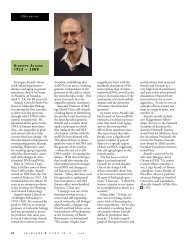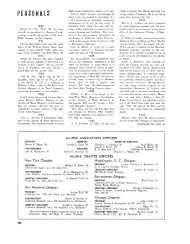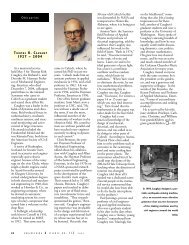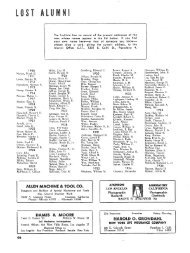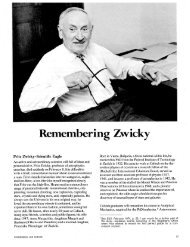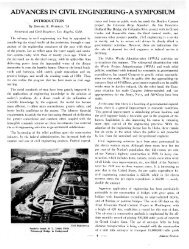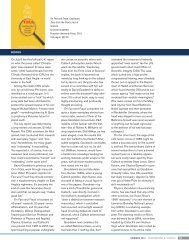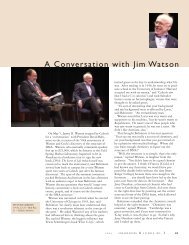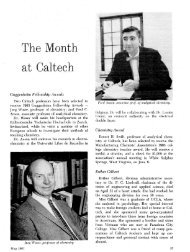indicates - Engineering & Science - California Institute of Technology
indicates - Engineering & Science - California Institute of Technology
indicates - Engineering & Science - California Institute of Technology
Create successful ePaper yourself
Turn your PDF publications into a flip-book with our unique Google optimized e-Paper software.
The little fuel cell that<br />
could: to show that our<br />
“Oreo cookies” (above)<br />
generate electricity, we put<br />
them into a stack (right)<br />
wired up to an LED display<br />
(bottom). It worked!<br />
The potential <strong>of</strong> fuel-cell technologies for reducing<br />
our reliance on fossil fuels, and the environmental<br />
damage <strong>of</strong> our energy consumption, is tremendous.<br />
26 ENGINEERING & SCIENCE NO. 1 2003<br />
We’ve made a fuel cell using cesium hydrogen<br />
sulfate—the white central layer in the close-up <strong>of</strong><br />
the pellet on the left. The current collector, which<br />
is graphite paper, is the dark outer part. In between<br />
are the electrocatalysts, but they’re too thin to see.<br />
My students sometimes like to call these fuel cells<br />
Oreo cookies, hoping they’ll get sponsorship from<br />
Nabisco (which hasn’t happened quite yet).<br />
Although these electrolytes are water soluble, we<br />
can get them to work if the cell is operated above<br />
100°C. We’ve achieved a very high open-circuit<br />
voltage with this fuel cell—much better than with<br />
PEM fuel cells. But overall, the power we’re getting<br />
is quite low, only 10 to 15 milliwatts per square<br />
centimeter, so we still have to make our electrolytes<br />
much thinner (the one in the photo is 1,400<br />
microns thick, and we’d like to get down to 20<br />
microns) and find better ways to put the catalysts on.<br />
Nevertheless, the pro<strong>of</strong> <strong>of</strong> principle is there, so<br />
we’ve gone ahead and made a stack out <strong>of</strong> these<br />
cells. We purchased a commercial stack, put our<br />
own membranes inside, and connected them to an<br />
LED to demonstrate that the cells were generating<br />
a current. We also ran the stack in direct-methanol<br />
mode, and again got a substantial open-circuit<br />
voltage compared to PEM fuel cells running on<br />
this fuel. Solid-acid electrolytes don’t have any<br />
problems with methanol permeability, so we can use<br />
quite a high methanol concentration, which is one<br />
<strong>of</strong> the reasons we can achieve such a good voltage.<br />
Now for the fly in the ointment. After we<br />
operated our fuel cell for some time, the performance<br />
started to degrade. It turned out that the<br />
cesium hydrogen sulfate electrolyte was being<br />
reduced by hydrogen to produce hydrogen sulfide,<br />
a terrific poison not only for human beings but<br />
also for the platinum catalyst. So now we’re<br />
engaged in a search for solid acids that are stable<br />
in hydrogen. Many <strong>of</strong> the solid-acid compounds<br />
known to have a high conductivity when heated<br />
are sulfates and selenates, but this phenomenon<br />
has also recently been found in phosphates and<br />
arsenates. Phosphorus and arsenic are one group<br />
to the left <strong>of</strong> sulfur and selenium in the periodic<br />
table. If we go one more group to the left, we find<br />
silicon and germanium. Do silicates and germanates<br />
also have high conductivity? We’re looking at the<br />
many possible chemical analogs <strong>of</strong> cesium hydrogen<br />
sulfate, such as barium hydrogen phosphate,<br />
strontium dihydrogen germanate, lanthanum<br />
hydrogen silicate, and so on, to see if their conductivity<br />
also rises when heated. These alternatives<br />
are all stable in hydrogen, which is what we’re<br />
looking for. Moreover, many are water insoluble,<br />
which is great for the application, but makes them<br />
much more challenging to synthesize.<br />
To guide our synthesis efforts, we’re doing<br />
computational studies in collaboration with<br />
Bill Goddard, the Ferkel Pr<strong>of</strong>essor <strong>of</strong> Chemistry,<br />
Materials <strong>Science</strong>, and Applied Physics, that allow<br />
us to predict the properties in advance before we go<br />
through the very difficult exercise <strong>of</strong> synthesizing


